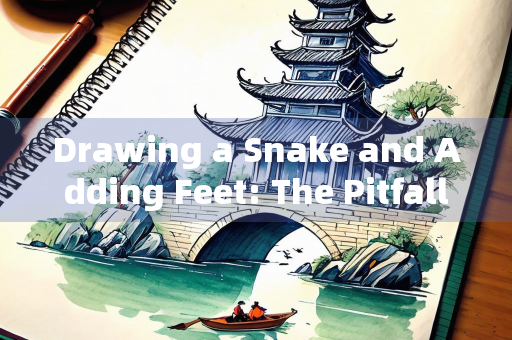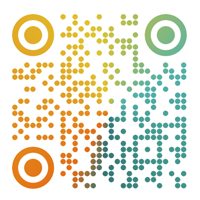Introduction

The Chinese id iom "画蛇添足" (huà shé tiān zú), which literally translates to "drawing a snake and adding feet," is a vivid metaphor for unnecessary or excessive actions that spoil an otherwise perfect outcome. In English, the closest equivalent expressions would be "gilding the lily" or "over-egging the pudding," both of which convey the idea of ruining something by adding superfluous elements.
This article explores the origins of the idiom, its cu lt ural significance, and its relevance in modern life—both in personal endeavors and professional settings. By understanding the dangers of overcomplicating things, we can learn to appreciate simplicity and efficiency.
The Origin of the Idiom
The phrase "画蛇添足" comes from a fable recorded in the ancient Chinese text *Stratagems of the Warring States* (*战国策*). The story goes as follows:
> A wealthy man hosted a banquet and offered a pot of wine as a prize for the best painter among his guests. The challenge was simple: whoever could draw a snake the fastest would win the wine. One guest quickly finished his drawing and, seeing that the others were still working, decided to add feet to his snake to make it even more impressive. However, another guest pointed out, "A snake doesn’t have feet—you’ve ruined it!" As a result, the first painter lost the prize because of his unnecessary addition.
This tale illustrates how excessive embellishment can backfire, turning a winning effort into a failure.
English Equivalents: "Gilding the Lily" and "Over-Egging the Pudding"
While "画蛇添足" is uniquely Chinese, similar concepts exist in English:
1、"Gilding the lily" – This phrase originates from Shakespeare’s *King John*: "To gild refined gold, to paint the lily… is wasteful and ridiculous excess." It means adding unnecessary decoration to something already beautiful.
2、"Over-egging the pudding" – A culinary metaphor meaning to add too many eggs to a pudding, making it heavy and unpalatable. It refers to overcomplicating a task to the point of failure.
Both expressions warn against excessive embellishment, much like "画蛇添足."
Modern Applications: When Less is More
1. In Business and Marketing
Many companies fall into the trap of overcomplicating their products or messaging. For ex amp le:
Tech Gadgets: Some smartphones add unnecessary features that confuse users rather than enhance usability.
Advertising: Overly complex ads may fail to convey the core message, losing customer interest.
Steve Jobs famously believed in simplicity, stating:
> *"Simple can be harder than complex: You have to work hard to get your thinking clean to make it simple."
This philosophy helped Apple succeed where others failed by avoiding "画蛇添足."
2. In Writing and Communication
Academic Writing: Some scholars use excessive jargon, making their work inaccessible.
Storytelling: A great plot can be ruined by unnecessary subplots or forced twists.
As Mark Twain advised:
> *"If you catch an adjective, kill it."
Clarity and conciseness often trump elaborate but confusing expressions.
3. In Personal Life
Gift-Giving: A simple, thoughtful gift is better than an extravagant but impersonal one.
Relationships: Over-explaining or over-apologizing can make interactions awkward rather than sincere.
The principle applies to self-improvement as well—trying to master too many skills at once often leads to burnout.
Psychological Perspective: Why Do People "Add Feet to Snakes"?
Several cognitive biases drive this behavior:
1、Perfectionism: The belief that "more is better" leads to unnecessary refinements.
2、Fear of Simplicity: Some assume that complex solutions appear more intelligent.
3、Overconfidence: After initial success, people may think they can improve something that’s already complete.
Recognizing these tendencies can help us avoid self-sabotage.
How to Avoid "画蛇添足" in Daily Life
1、Define Clear Objectives – Before adding anything, ask: *Does this improve the core purpose?
2、Seek Feedback – Others may spot unnecessary additions you overlook.
3、Embrace Minimalism – Whether in design, work, or lifestyle, simplicity often yields the best results.
4、Learn When to Stop – Knowing when something is "good enough" prevents diminishing returns.
Conclusion
"画蛇添足" serves as a timeless reminder that excess can undermine excellence. Whether in art, business, or personal decisions, the temptation to add unnecessary flourishes can lead to failure instead of success. By recognizing when to stop—when the snake is perfectly drawn without feet—we can achieve more with less.
As Leonardo da Vinci once said:
> *"Simplicity is the ultimate sophistication."
Let this wisdom guide us in avoiding the pitfalls of overcomplication. After all, a snake doesn’t need feet to be complete—and neither do most of our endeavors.
本文地址: https://www.shuiwy.com/a/100403.html
文章来源:im
版权声明:除非特别标注,否则均为本站原创文章,转载时请以链接形式注明文章出处。
2025-12-26im
2025-12-26im
2025-12-26im
2025-12-26im
2025-12-26im
2025-12-26im
2025-12-26im
2025-12-26im
2025-12-26im
2025-12-26im
2024-03-03im
2024-01-24im
2023-05-29im
2023-06-04im
2023-06-16im
2023-10-07im
2023-06-20im
2023-10-07im
2023-06-19im
2023-06-14im
2025-04-17im
2023-06-13im
2025-04-17im
2023-06-04im
2023-06-09im
2025-04-18im
2025-05-02im
2024-01-17im
2025-04-17im
2023-05-26im
扫码二维码
获取最新动态
